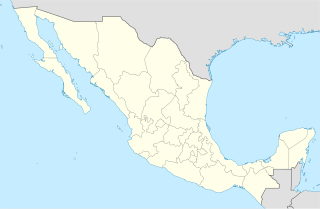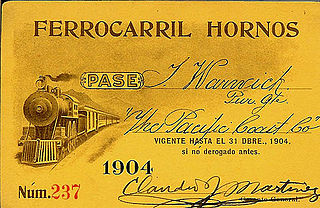 W
WThe Provincias Internas, also known as the Comandancia y Capitanía General de las Provincias Internas, was an administrative district of the Spanish Empire created in 1776 to provide more autonomy for the frontier provinces of the Viceroyalty of New Spain, present-day northern Mexico and the Southwestern United States. The goal of its creation was to establish a unified government in political, military and fiscal affairs. Nevertheless, the Commandancy General experienced significant changes in its administration because of experimentation to find the best government for the frontier region as well as bureaucratic in-fighting. Its creation was part of the Bourbon Reforms and was part of an effort to invigorate economic and population growth in the region to stave off encroachment on the region by foreign powers. During its existence, the Commandancy General encompassed the Provinces of Sonora y Sinaloa, Nueva Vizcaya, Las Californias, Nuevo México, Nuevo Santander, Nuevo Reyno de León, Coahuila and Texas.
 W
WCoahuila y Tejas was one of the constituent states of the newly established United Mexican States under its 1824 Constitution.
 W
WThe Battle of Buena Vista, known as the Battle of La Angostura in Mexico, and sometimes as Battle of Buena Vista/La Angostura, pitted the invading forces, largely volunteers, under General Zachary Taylor and the much larger Mexican Army under General Antonio López de Santa Anna the Mexican-American War. Buena Vista, a village in the state of Coahuila, is seven miles (12 km) south of Saltillo, in Mexico. La Angostura was the local name for the site. The outcome of the battle was ambiguous, with both sides claiming victory. Santa Anna's forces withdrew with war trophies of cannons and flags, leaving the field to the surprised American forces, who had expected there to be another day of hard fighting.
 W
WThe Battle of Puerto de Piñones was a battle of the War of Mexican Independence that occurred on 1 April 1811 at Puerto de Piñones, Coahuila. The battle was fought between the royalist forces loyal to the Spanish crown, commanded by José Manuel de Ochoa, and the Mexican rebels fighting for independence from the Spanish Empire, commanded by Ignacio López Rayón. The battle resulted in a victory for the Mexican rebels.
 W
WChichimeca is the name that the Nahua peoples of Mexico generically applied to nomadic and semi-nomadic peoples who were established in present-day Bajio region of Mexico. Chichimeca carried the same sense as the Roman term "barbarian" to describe Germanic tribes. The name, with its pejorative sense, was adopted by the Spanish Empire. For the Spanish, in the words of scholar Charlotte M. Gradie, "the Chichimecas were a wild, nomadic people who lived north of the Valley of Mexico. They had no fixed dwelling places, lived by hunting, wore little clothes and fiercely resisted foreign intrusion into their territory, which happened to contain silver mines the Spanish wished to exploit." In spite of not having temples or idols, they practiced animal and human sacrifice, and they were feared for their expertise and brutality in war.
 W
WGeneral Cepeda is a city and seat of the municipality of General Cepeda, in the north-eastern Mexican state of Coahuila. The town is named after Victoriano Cepeda Camacho (1826-1892), a general and a governor of Coahuila. Until 1892, the town was named San Francisco de los Patos and had been the headquarters for two of the largest estates in all of the Americas.
 W
WThe Guachichil, Cuauchichil, or Quauhchichitl, are an Indigenous people of Mexico. Pre-contact, they occupied the most extensive territory of all the indigenous Chichimeca Nations tribes in pre-Columbian Central Mexico.
 W
WHornos Railroad was a 2 ft narrow gauge railway owned by Hacienda de Hornos in Mexico. Hacienda de Hornos was a large grain and cattle ranch in southwestern Coahuila near Torreón. The line extended 51 kilometres (32 mi) from an interchange with the Mexican International Railway at Hornos through Hacienda de Hornos to Alamito with a 4-kilometre (2.5 mi) branch to interchange with the Ferrocarril Coahuila y Pacifico at Viesca. Construction began at Hornos in 1902, and the line began common-carrier freight and passenger service in 1904 with two daily trains in each direction between Hornos and Viesca. Twenty-ton locomotive #4 was the only 2 ft narrow gauge 2-8-2 ever built for North American service. The railroad was damaged by the Mexican Revolution in 1914; and the last public timetable was published in 1930 for a single daily mixed train with no service to Alamito. The line disappears from government records after 1945.
 W
WThe Pasta de Conchos mine disaster occurred at approximately 2:30 a.m. CST on February 19, 2006, after a methane explosion within a coal mine near Nueva Rosita, San Juan de Sabinas municipality, in the Mexican state of Coahuila. The mines were run by Grupo México, the largest mining company in the country. It was estimated that 65 miners, who were working the 10 p.m. to 6 a.m. shift that morning, were trapped underground by the explosion. Only 2 of the 65 bodies have been recovered.
 W
WThe Sánchez Navarro latifundio (1765-1866) in Mexico was the largest privately owned estate or latifundio in all of Latin America. At its maximum extent, the Sánchez Navarro family owned more than 16,500,000 acres (6,700,000 ha) of land, an area almost as large as the Republic of Ireland and larger than the American state of West Virginia. The Sánchez Navarro latifundio was more than five times the size of the largest ranch, the XIT, in the United States and extended 350 kilometres (220 mi) from north to south. The latifundio was located in the Chihuahuan Desert, mostly in Coahuila, but also in Nuevo Leon, Durango, and Zacatecas.
 W
WThe Torreón massacre was a racially motivated massacre that took place on 13–15 May 1911 in the Mexican city of Torreón, Coahuila. Over 300 Chinese residents were killed by a local mob and the revolutionary forces of Francisco I. Madero. A large number of Chinese homes and establishments were looted and destroyed.
 W
WWells of Baján are water wells located between Saltillo and Monclova in the northern Mexican state of Coahuila. The small community near the wells is called Acatita de Baján. In the first phase of the Mexican War of Independence, revolutionary leaders Miguel Hidalgo, Ignacio Allende, José Mariano Jiménez, and Juan Aldama, plus nearly 900 men in the rebel army were captured here on March 21, 1811 by 150 soldiers commanded by Ignacio Elizondo. Elizondo pretended to be a supporter of the struggle to overthrow Spanish rule, lured the rebels into a trap, and captured them with little resistance. The four leaders and many of their followers were tried and executed.